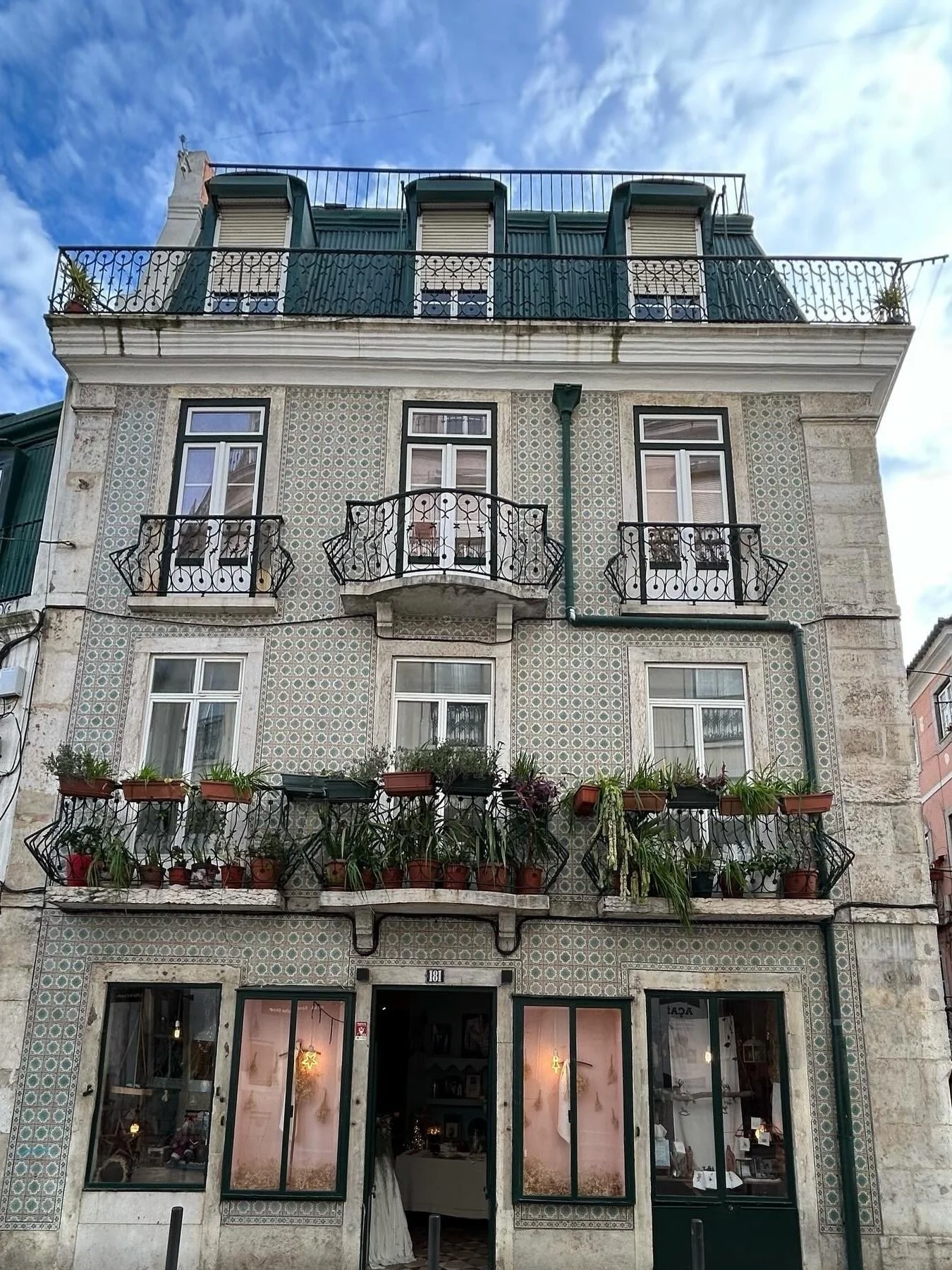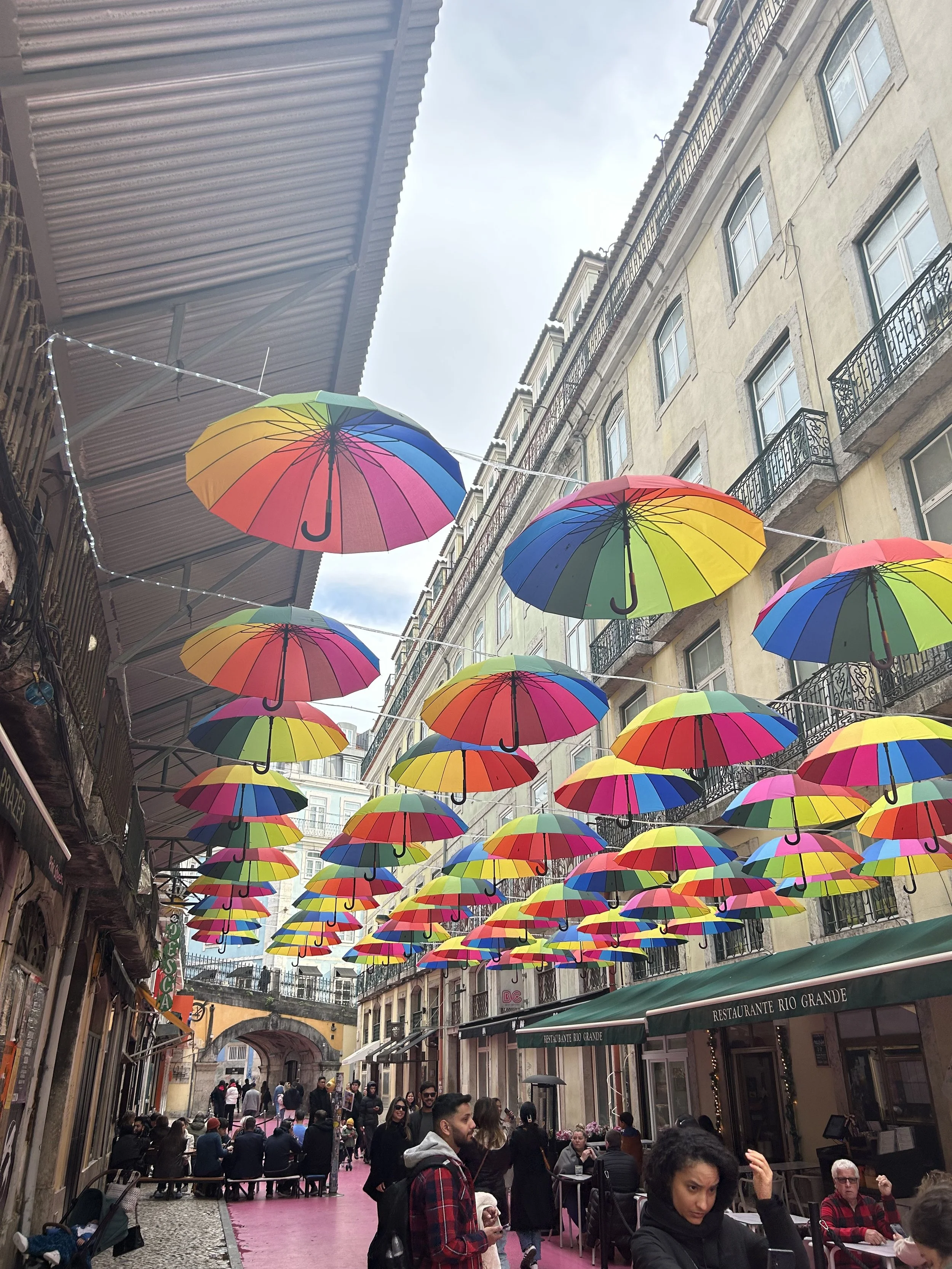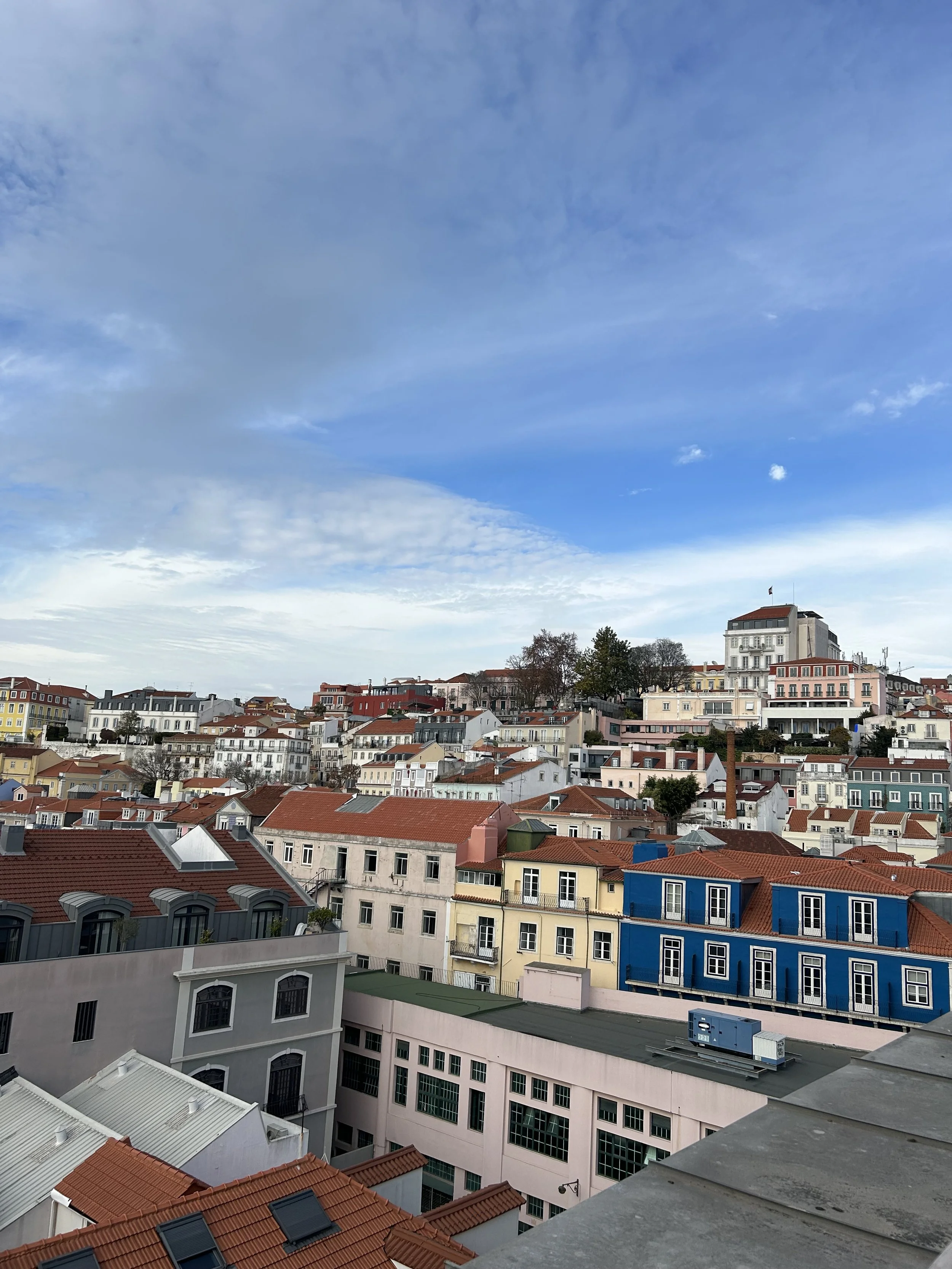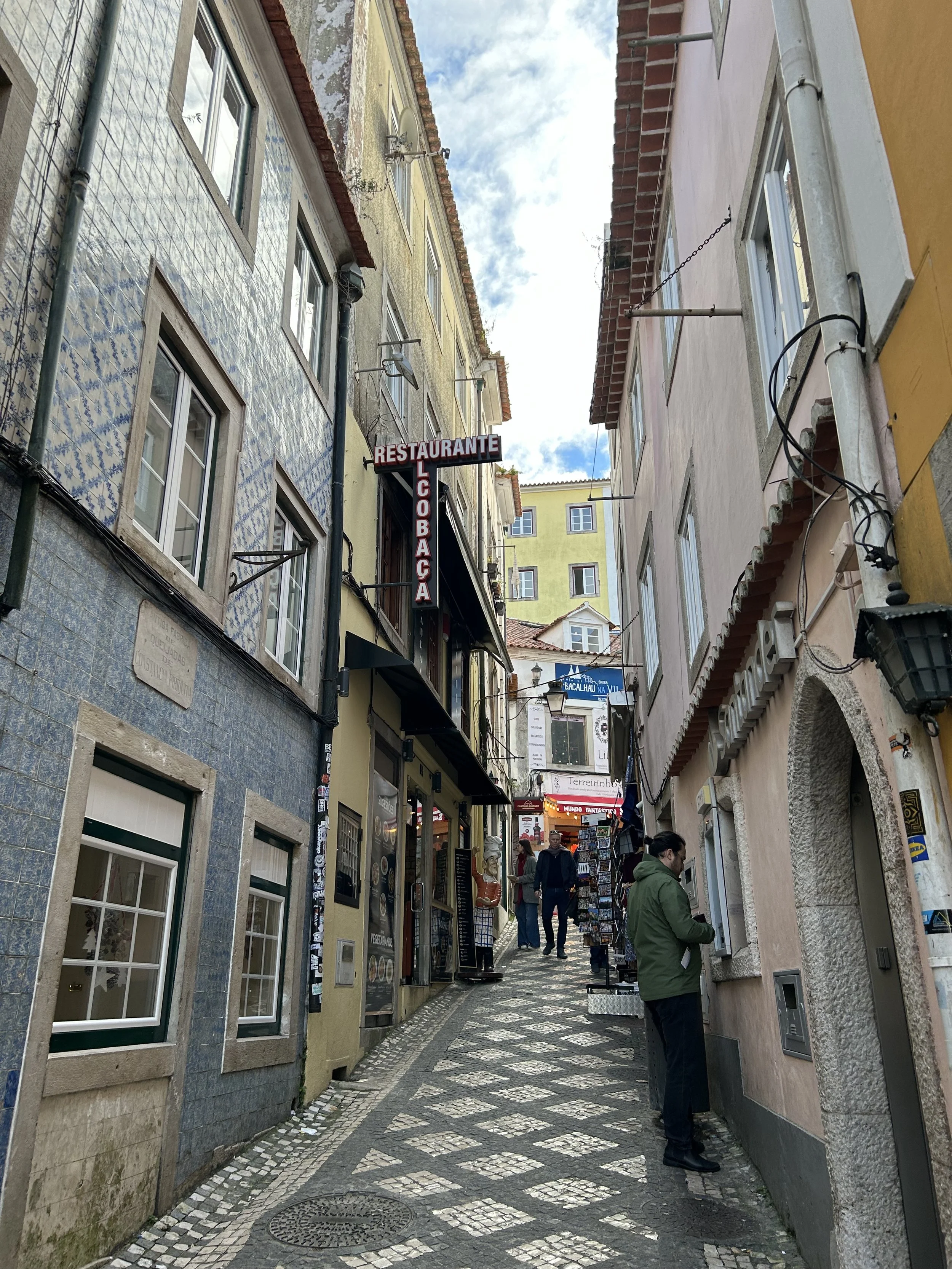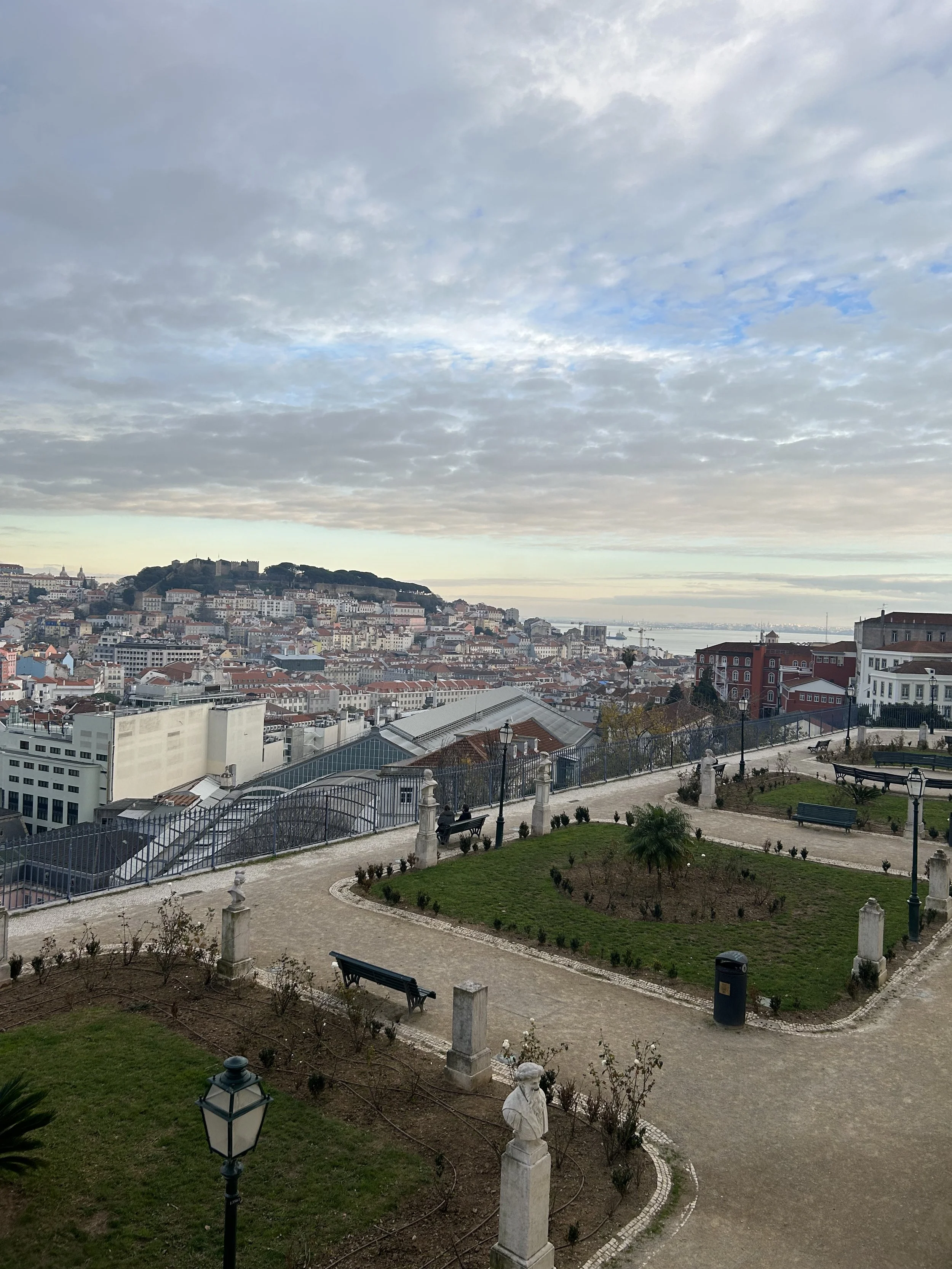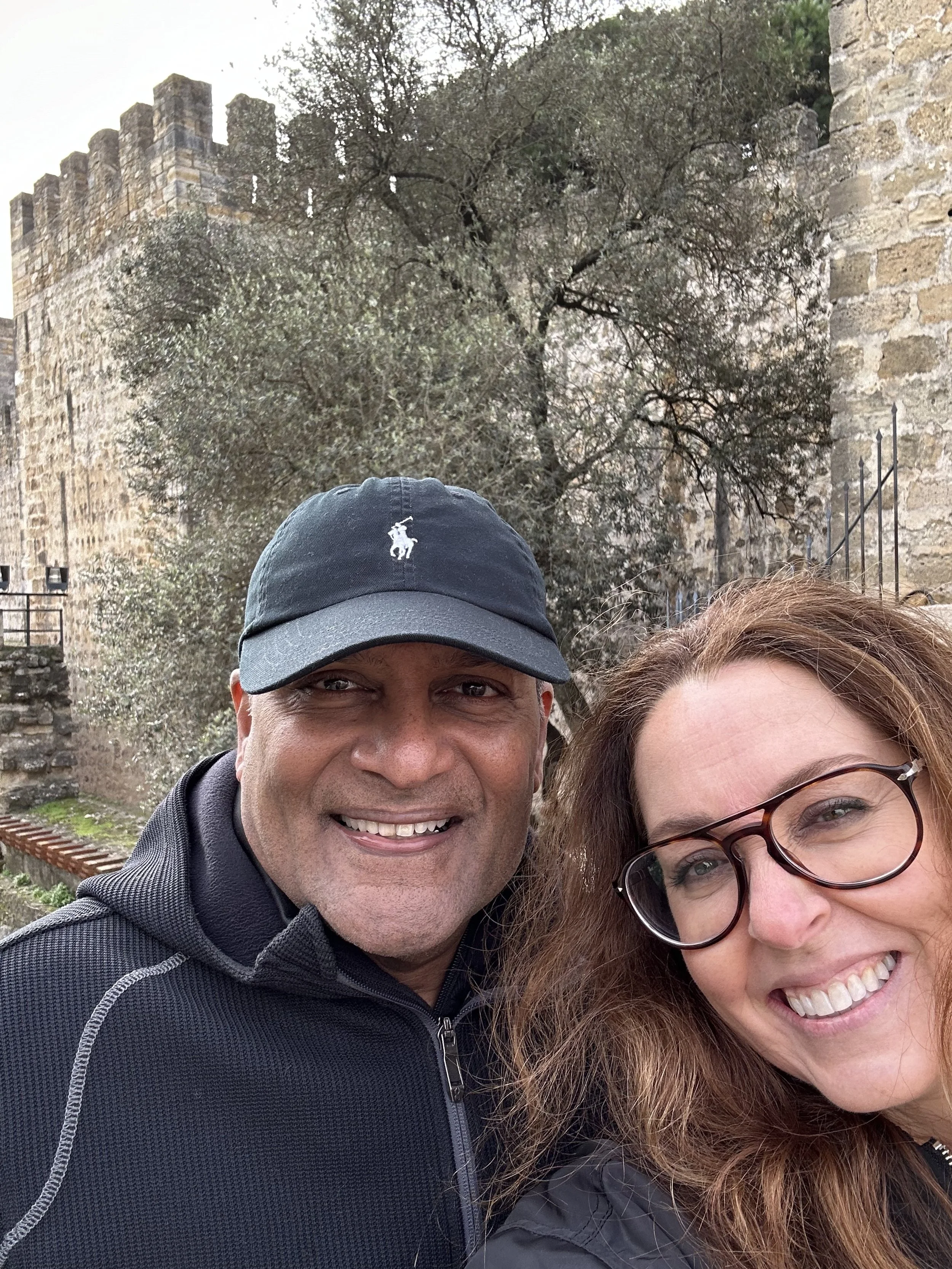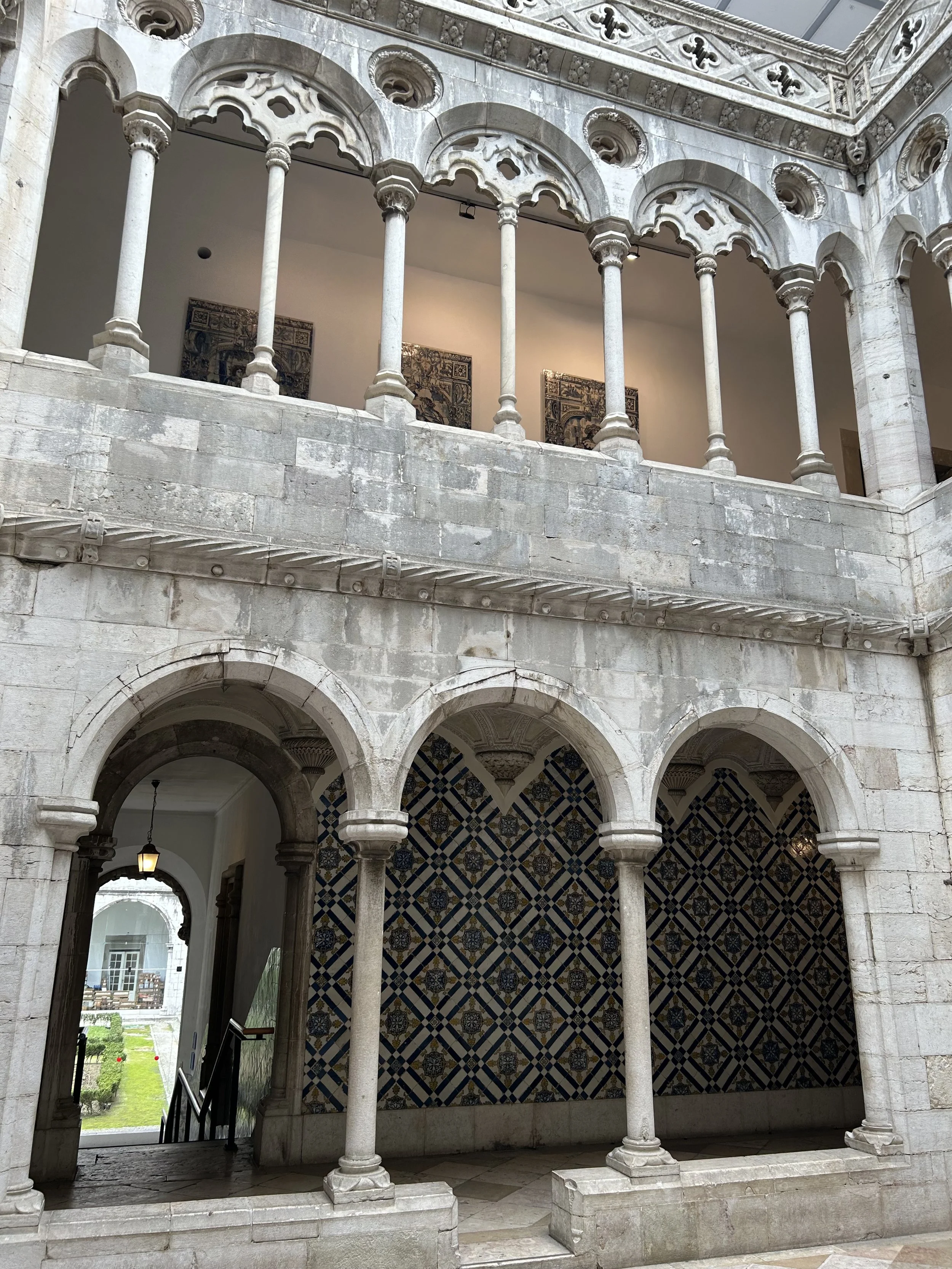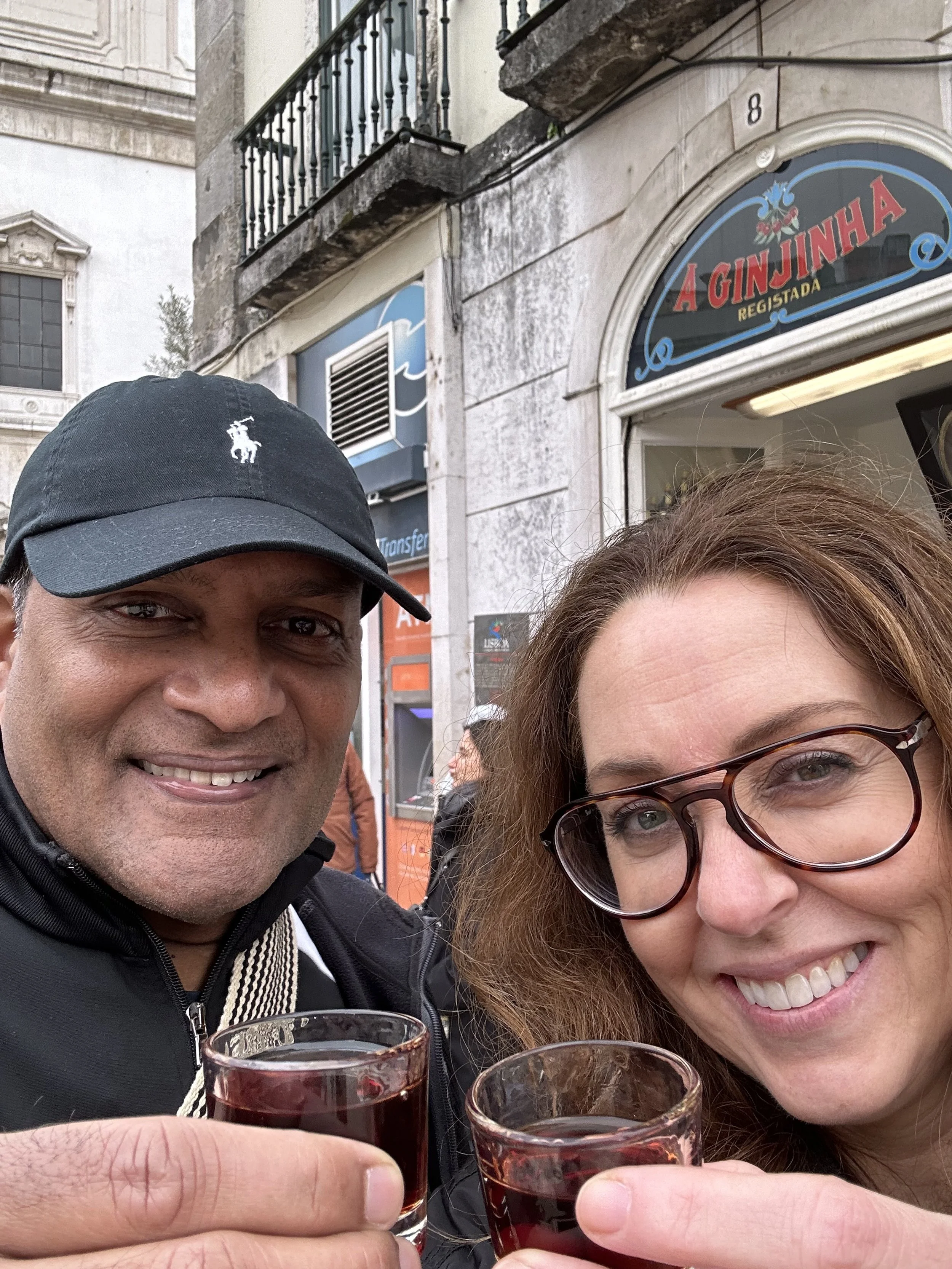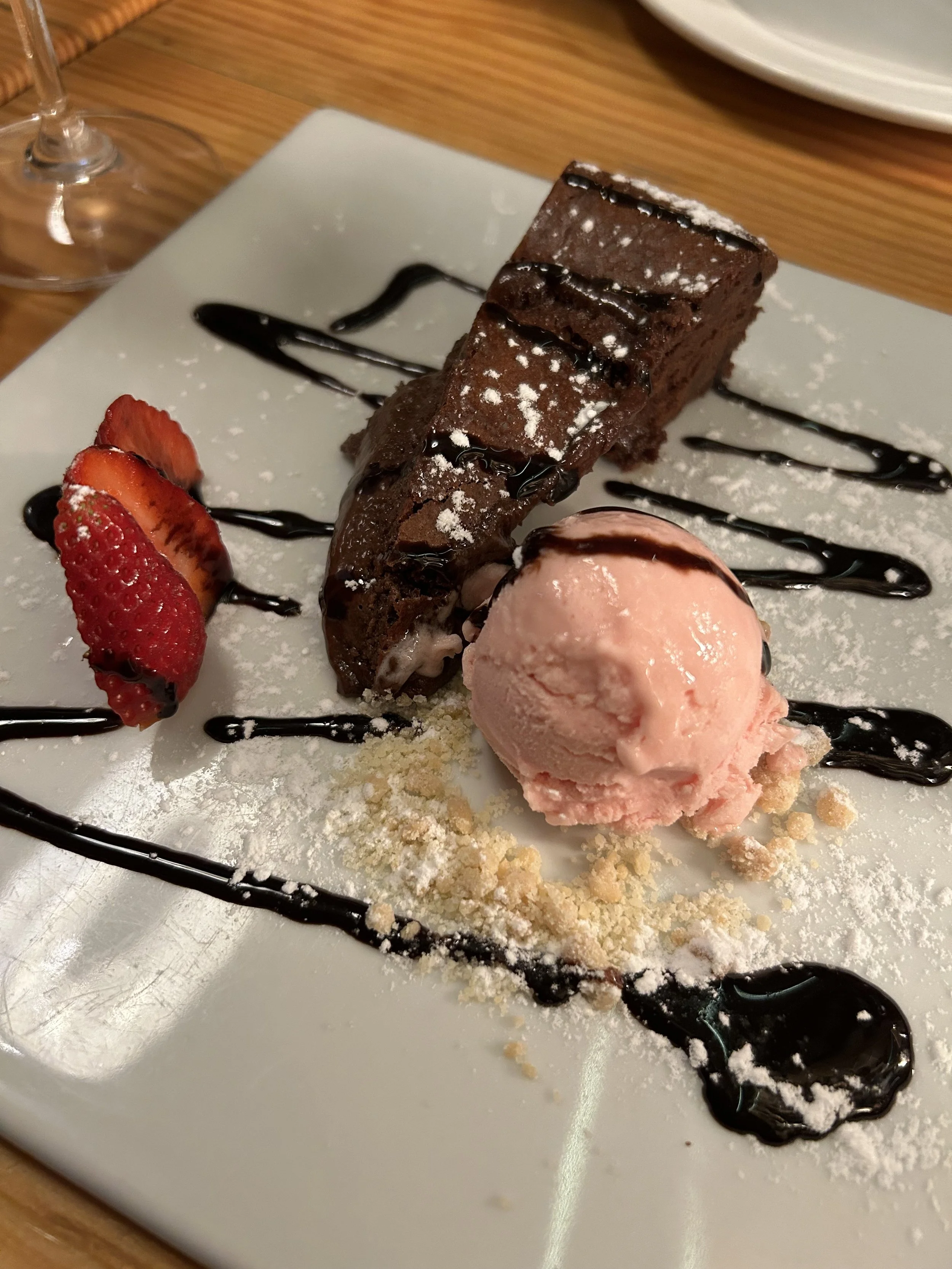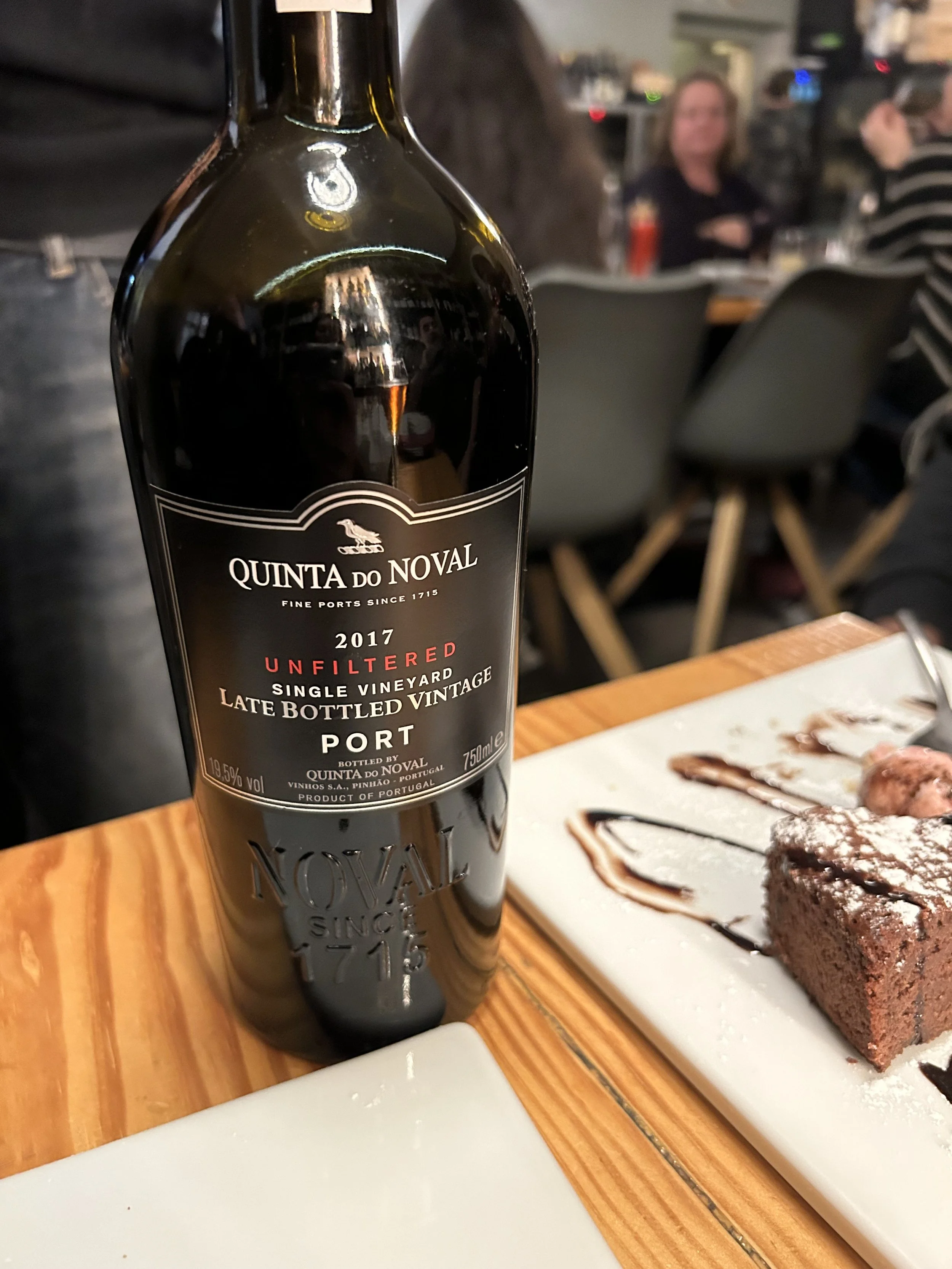Lisbon, Portugal: Explore Portugal’s Vibrant Capital City
We booked a last minute holiday getaway to Lisbon over Christmas and I couldn’t have been happier. Having never been to Lisbon, nor taken much time to prep for the trip, I didn’t really know what to expect. Lisbon is known for its seven hills, colorful tiles, winding streets, and stunning views - I was immediately enthralled with its history and charm. Nestled between the Atlantic Ocean and the Tagus River, Lisbon reminds me so much of San Francisco, but better. They both have a bay, a bridge spanning the bay (which are also both red), hills the are quite intense, use trolleys (or cable cars) to navigate the hills, had massive earthquakes that caused the city to be rebuilt, the list goes on. Did you know Lisbon is one of the oldest capitals of Europe, predating Paris and Rome by centuries? Let’s explore what the magical city has to offer.
Beautiful Portuguese Tiled Building
Walking through Bairro Alto as places get ready for the evening
Pink Street
Facts about Lisbon
Lisbon is on the westernmost part of Europe alongside the Atlantic Ocean and the Tagus River (one of Europe’s largest rivers)
Having a Mediterranean climate makes it popular with tourists as with mild winters and hot summers, as well as being mostly sunny throughout the year.
Lisbon is known for its seven hills, which offer amazing views of the city from various vantage points.
In 1775, a devastating earthquake hit the city causing complete destruction and a need to rebuild the whole city.
Lison’s architecture reflects its influences from various historical periods - Roman, Moorish, and Christian rule.
The city itself is very diverse and is known for its welcoming and friendly people.
Throught out the city you will see impressive tilework, known as azulejos. These ceramic tiles date back to the 13th century and were brought to Portugal by the Moors. You can find them on everything from the streets to buildings, metro stations to churches. The patterns have meaning are are specific to their location.
Fado Music originated in Libson and you can enjoy live performances in many places across the city.
Walking in Sintra
Tram 28
Rossio Train Station
How to get around in Lisbon
Lisbon is a picturesque city and the best way to see it is on foot. But, with the hills, it’s important to note there are easier ways to get around the city if walking isn’t your thing. I don’t recommend a car though as many streets are winding, narrow, and hilly, making it tough to navigate.
Walk
The city is very pedestrian friendly and the best way to find gems while exploring. Be prepared for hills and wear shows that are comfortable. Most streets are tiled, so flat shoes are best. And be careful if they’re wet, they can be slippery.
Trolley/Tram
The trams are famous in Lisbon and you should try at least one while you visit. Tram 28 is the most traveled as it offers you sites of the most popular neighborhoods of Lisbon. Note that the lines can be long to get on this tram and often they are standing room only, to ensure you secure a spot, a recommend going early in the day or late at night.
Train/Bus
Lisbon has an easy to navigate bus and metro system. The cost is very affordable and can get you everywhere from the airport to Sintra without the need of a car.
Funiculars and Elevators
Throughout the city you will find elevators and funiculars (looks like a trolley, connected to a cable that goes up and down a hill) that allow you to avoid walking up the hill (or steps, in some cases) and take a ride. The most famous one is Elevador de Santa Justa. If you want to ride this one, get there early as the line builds during the day and it’s not uncommon to wait 1-2 hours to ride this elevator.
Uber/Bolt
Uber and Bolt are both in Lisbon and extremely affordable. We opted to use uber from the airport with late arriving and early departing flights. The ride was around 20 eruo and worth not having to lug our luggage up and down hills to public transport. If you’re looking for a quick trip across the city, this is a great option.
Colorful Hilltops in Lisbon
Quaint alleyways in Sintra
City views of Lisbon and S Jorge Castle
Where to stay
Libson is broken out into different neighborhoods, each with a different vibe. We stayed in an Air B+B and I highly recommend that option. I found them to be more affordable and you can really narrow into which neighborhood you want to be in.
We stayed in Chiado and loved it. This is a trendy, hilly neighborhood has lots of shopping and restaurants. For us it was centrally located to everything we wanted to do and we were able to get almost anywhere in a 15-30 min walk. We stayed here, but this place also looks great, and so does this one.
Another neighborhood we enjoyed was Baixa. It’s close to all major attractions and more flat than hilly. Our friends stayed here. This place also looks great.
Alfama is known for its old school charm (it is one of the oldest parts of Lisbon). This place looks lovely. And so does this one.
The Bica neighborhood is another popular area to stay. Here is where you will find Time Out Market as well as many other great restaurants and bars. This place looks great and so does this place.
Bairro Alto is where the night life is. If you’re looking to stay up late and enjoy that scene, this is a great place for that. Note this area is PACKED with bars and restaurants and can be VERY loud in the evenings until early am. If noise isn’t an issue for you, this area is cute and also convenient.
Principe Real is quieter, with more gardens and open spaces. It’s still accessible to other parts of the city, but we didn’t find ourselves in this area as much, so we were glad we didn’t stay here. If you want to be away from the tourists and feel a bit more residential, this is the neighborhood to stay in. This place looks stunning, as does this one.
Avenida da Liberdade is where most of the high end hotels and shopping is located. Comparable to the Champs Elysee, this is where you want to stay if you’ve come to shop and enjoy the good life.
Colorful sardine cans
Port tasting in Sintra
Pastel de nata
Where to Eat and Drink
Peioxla Looking for good seafood? This is the place. Get the soft shell crab burger. You will not regret it.
Bonjardim Piri Piri Chicken. Thank me later.
Casa das Bifanas Traditional pork sandwich that doesn’t look like much, but trust me, it’s fantastic. Put Piri Piri and mustard on it.
Grapes and bites Fun wine bar in Bairro Alto neighborhood. Small bites. Live Music. Perfect evening.
Manteigaria The BEST pastel de natas (IMHO) can be found here. We tried them all over the city, these were our favorite.
The Coffee Chiado Modern coffee bar that makes delicious coffee. Still haven’t found a cappuccino as good as this one.
Java Rooftop. Enjoy the views of the river and city while having cocktails.
Time Out Market. Very touristy, but good place to sample lots of different food. It’s a big food hall.
Cafe de Sao Bento Old school steakhouse with cozy charm.
A Brasileira Start your day with coffee and breakfast
Maria Palato Wine Bar - Great wine bar to try port or madeira. Cute space.
JAC Brunch and Concept Store - Another good breakfast place - get the eggs benedict!
Exploring the Castle de S Jorge
National Tile Museum
What to do in Lisbon
Wander the town. This is the best way to explore the city. Lisbon is full of winding alleyways and streets full of shops, restaurants and bars. Get lost exploring the city and see what you can find.
Take a Food Tour. We did an evening food/wine tour from Devour Tours and loved it. We ended up back at one of the places we stopped at because we loved it so much (Grapes and Bites). They also have daytime tours and I think this is the best way to experience food in the city.
Visit the Tile Museum. Portugal is known for their tiles and what better way to learn the history than to visit this museum. It’s located in an old convent and features and extensive collection of tiles dating back to the 15th century.
Explore the Castle St Jorge. While very touristy (get there early, it gets busy), this castle sits on a hill and has some quite impressive views of the city.
Visit Sintra. This is a great day trip about an hour out of the city. Sintra is known for its seven palaces, where royalty used to stay during the summer months to stay cool. We took the train and spent about half a day here. I would highly recommend arranging for a tour before you go. With our lack of planning, we didn’t get to any of the palaces, but we did have a lovely day exploring the city and doing a port tasting (which I HIGHLY recommend!). We could have just grabbed a guide off the train, but we didn’t know enough about what we wanted to see and didn’t want to negotiate pricing on the spot.
Ride a trolley. In addition to being a fun way to get around the city, it’s also a great way to see some of the sights. Tram 28 goes through all the popular tourist areas, but note that it gets VERY busy, so it’s best to go early in the morning or late at night.You can pay with cash right on the tram or get a day pass from any metro station.
Take an elevator or funicular. The most popular elevator is the Santa Justa, but there are a handful of them throughout the city to help you avoid the hills. Santa Justa provides 360 degree views of the city from it’s Gothic tower. Lines can be long and it’s not uncommon for an hour+ wait. Another fun way to climb the hills is a funicular. Simply put, a funicular is a trolly car on a a cable that goes up and down the hill. The Bica Funicular is the most picturesque and the Da Gloria funicular ride showcases the city’s graffiti artists along the hill slope.
Enjoy a kiosk. You can find a kiosk or two in almost every square and park. These kiosks serve coffee, drinks, and snacks and area a great place to take a break while exploring.
Daily shot of Ginjinha
Quite possibly the best chocolate cake and port pairing I’ve ever had at Grapes and Bites.
Port paired with chocolate cake
Top Tips
Lisbon’s peak season is summer and it’s full of tourists, but we preferred going during winter with the weather still being mild and the crowds significantly less.
Bread and Olives are not free, even if they are set on your table. If you’re ok with paying for them, go ahead and enjoy, otherwise ask them to take them away.
Lisbon is fully walkable and easy to navigate, but it is very hilly. Make sure you wear suitable walking shoes as most streets are tiled and can also be slick when wet.
I don’t recommend renting a car. You can get just about anywhere walking, grabbing a bus, or taking an uber. In fact, Uber is quite inexpensive and I would say chose that if you don’t want to walk or take public transport.
Portuguese is the local language, but almost everyone also speaks english. We also found a lot of places that also spoke spanish.
Lisbon like most of Europe, does not tip for service, they don’t even give you the option to do so unless you leave cash.
Carry some euros for use on the bus and for some of the smaller businesses. While almost every place took cards, we found it easier to use euros for things like pastel de nata, gihjinha, and street snacks (roasted chestnuts).
Our final dinner across the Tagus at Ponto Final with views of Lisbon at night
Nighttime view of Lisbon from across the Tagus in Cacilhas
I hope you found this helpful and if you visit Lisbon, let me know what you thought.


